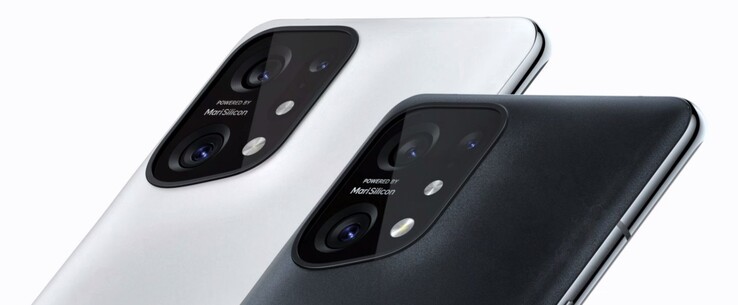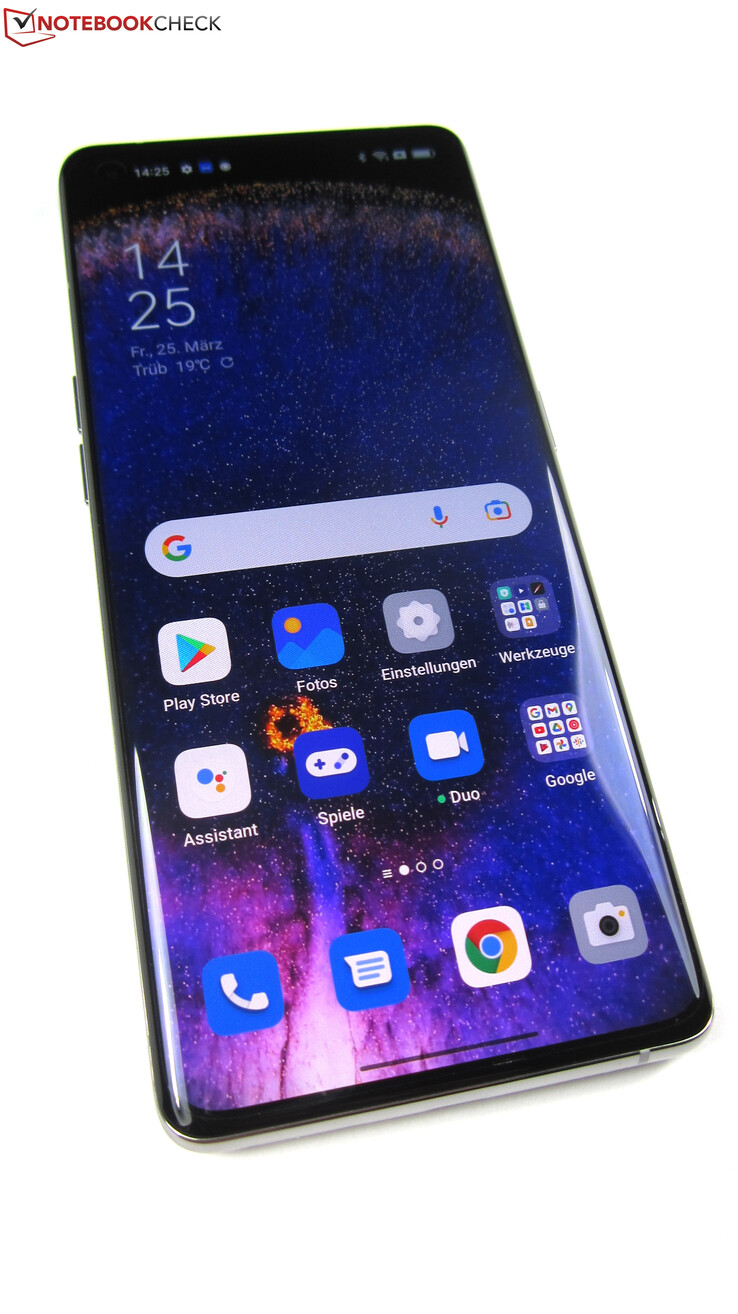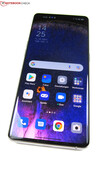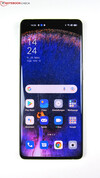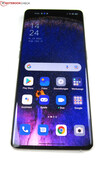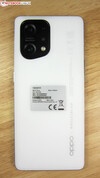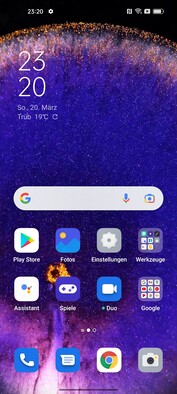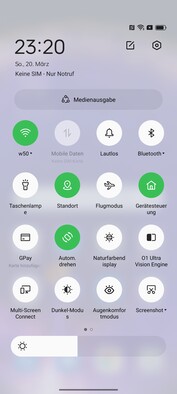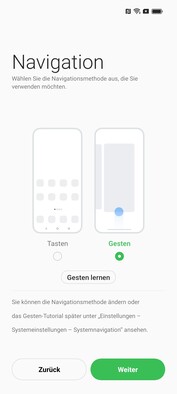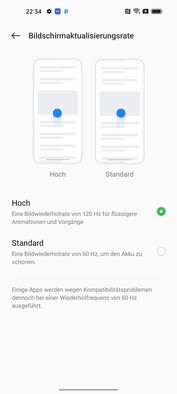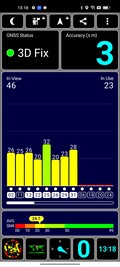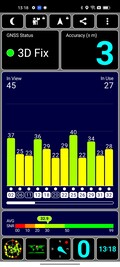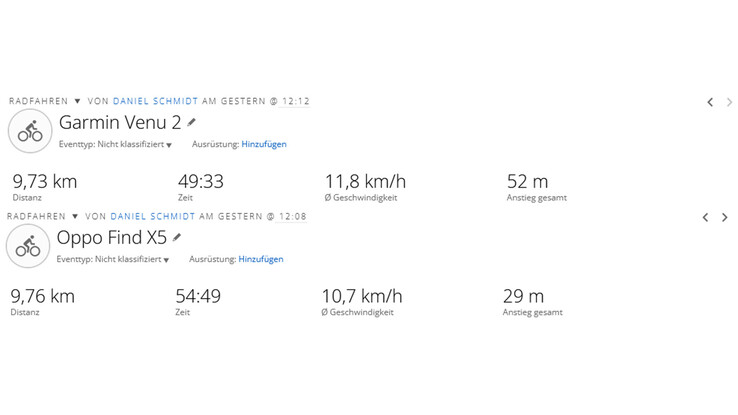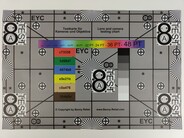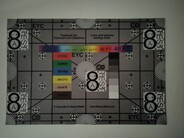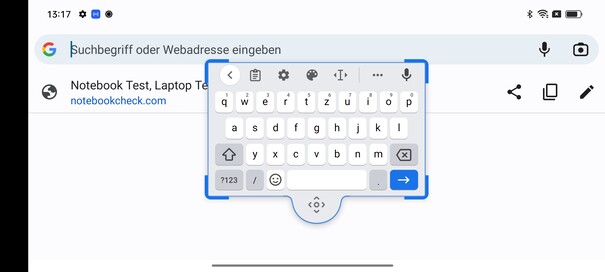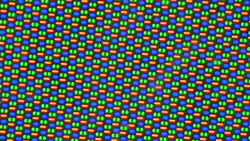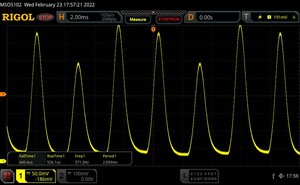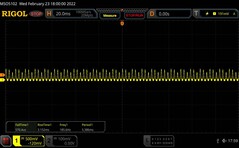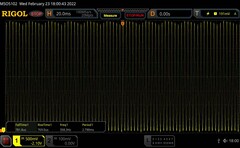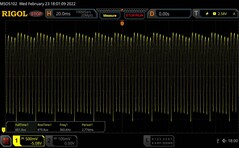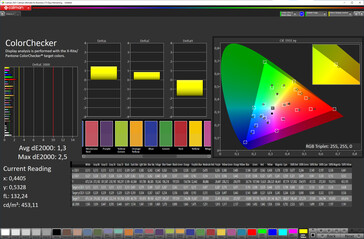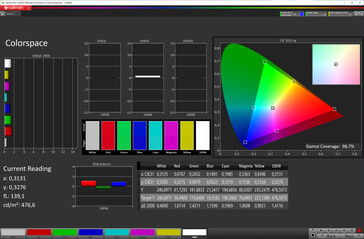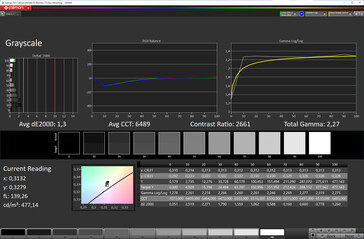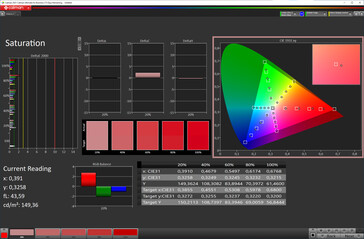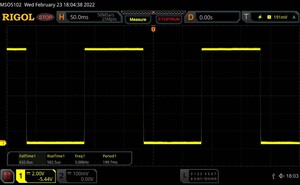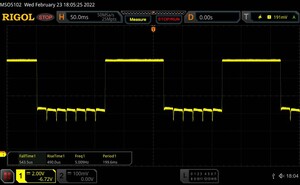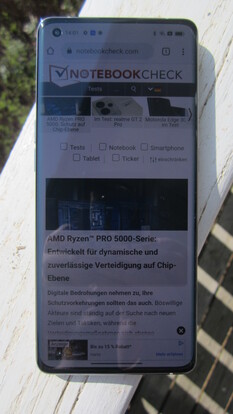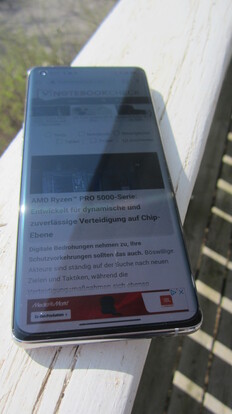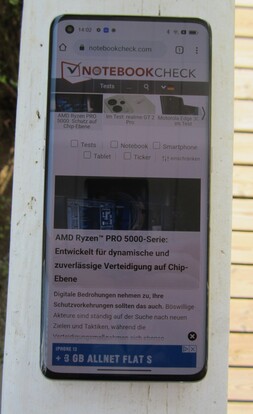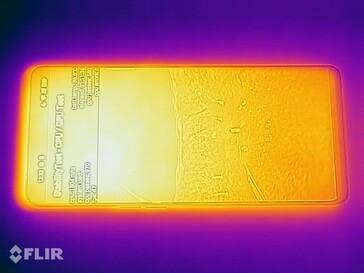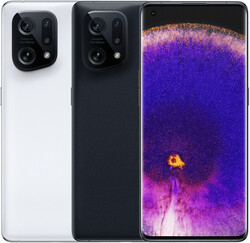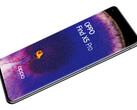Oppo Find X5 Smartphone Review: Budget Smartphone with a Four Digit Price Tag
Oppo is seeking to establish itself as a premium brand. The manufacturer has given a price tag of 1000 Euros for the Find X5, and this is not even the top model of the current series. This honor belongs to the Find X5 Pro, which officially costs another 300 Euros. Only the Find X5 Lite, which is available in online shops for less than 500 Euros, is reasonably cheap.
Just like the Find X5 Pro, the Find X5 also claims to be high-end, for it has inherited many features from the flagship and is thus equal to it in many respects. One example is the camera unit, which was developed in cooperation with Hasselblad. Unlike the Find X5 Pro, however, the Find X5 is not powered by the Snapdragon 8 Gen 1, but "only" by the Snapdragon 888, but this offers more than enough performance for everyday use.
Possible Competitors in Comparison
Rating | Date | Model | Weight | Drive | Size | Resolution | Price |
|---|---|---|---|---|---|---|---|
| 87.9 % v7 (old) | 04 / 2022 | Oppo Find X5 SD 888 5G, Adreno 660 | 196 g | 256 GB UFS 3.1 Flash | 6.55" | 2400x1080 | |
| 88.7 % v7 (old) | 10 / 2021 | Apple iPhone 13 A15, A15 GPU 4-Core | 173 g | 128 GB NVMe | 6.10" | 2532x1170 | |
| 87.9 % v7 (old) | 03 / 2022 | Motorola Edge 30 Pro SD 8 Gen 1, Adreno 730 | 196 g | 256 GB UFS 3.1 Flash | 6.70" | 2400x1080 | |
| 87.4 % v7 (old) | 03 / 2022 | Realme GT 2 Pro SD 8 Gen 1, Adreno 730 | 189 g | 256 GB UFS 3.1 Flash | 6.70" | 3216x1440 | |
| 87.1 % v7 (old) | 10 / 2021 | Sony Xperia 5 III SD 888 5G, Adreno 660 | 168 g | 128 GB UFS 3.0 Flash | 6.10" | 2520x1080 | |
| 87.7 % v7 (old) | 03 / 2022 | Xiaomi 12 SD 8 Gen 1, Adreno 730 | 179 g | 256 GB UFS 3.1 Flash | 6.28" | 2400x1080 |
Case - All-around glass, matte and velvet back cover
The Oppo Find X5 is a slick piece of technology. Unlike the Oppo Find X5 Pro, the back cover is not made of ceramic, but of glass. Our review sample looks very classy with its matte white back cover and leaves practically no fingerprints. The surface also feels very high quality due to its velvety texture. Oppo also offers the smartphone in black.
The most striking design feature on the back is the camera unit. It does not use a rectangular bezel, but it has a slight tilt upwards at the lower right corner. Furthermore, the back cover and lens ensemble seem to have merged into one unit. The camera unit protrudes visibly and tangibly from the casing, but curves into the back, which further reinforces the initial impression of the smartphone as being of an overall high quality. However, the Find X5 wobbles quite a bit on the table, even when using the included protective cover.
The display glass of the Find X5 is also made of Gorilla Glass Victus, but still comes covered with a factory-standard protective film. The curved screen edges connect seamlessly to the metal frame that holds the front and back firmly together. Overall, the Find X5 is impressive with its high build quality and looks as if it was made from one piece. A pity, however, that Oppo did away with an IP certification of the smartphone. The Find X5 Pro, on the other hand, is waterproof and dustproof according to IP68 certification.
Hardware - Oppo Find X5 with 8 GB RAM and 256 GB storage
The Oppo Find X5 is only available in one storage configuration: 8GB of LPDDR5 RAM and 256GB of UFS 3.1 storage. If you subtract the storage space taken up by the Android 12, ColorOS 12.1 and the preinstalled apps, the actual available storage space amounts to almost 230 GB. This cannot be expanded due to the lack of a microSD slot.
Oppo's smartphone does not have a 3.5 mm jack or an FM radio. Instead, the USB-C port supports OTG as well as USB 3.2 Gen.1, meaning that data can be transferred at a nominal rate of 5 Gb/s. Many competitors would do well to take note of this, since most devices, including many high-priced models, only run at USB 2.0 speed.
The USB cable supplied with our review sample only supported USB 2.0, which did not allow for more than 30 MB/s on average. The Find X5 achieved the promised USB 3.2 Gen.1 speed with a USB 3.0 cable.
Software - Android 12 and ColorOS 12.1
The Oppo Find X5 runs Android 12 and the manufacturer's own ColorOS 12.1 user interface. At the time of testing (early April), the Android security patches were from February 1 and are thus still quite up to date.
The clearly designed ColorOS 12.1 stands out with some software settings that are usually lacking in a standard Android, such as a split-screen view. This is activated via a three-finger swipe and displays two apps on the screen at the same time. The Multi Screen Connect feature allows for the smartphone to be mirrored and operated on Windows PCs.
Fortunately, Oppo was restrained in its choice of software offerings on the Find X5. Alongside the standard Google apps and several manufacturer tools such as a phone manager, clone app and compass, only a few third-party apps have found their way into ROM. These apps, including Facebook, Netflix, TikTok and AliExpress, can all be uninstalled.
Communication and GNSS – Fast WiFi, average GPS
Apart from mmWave, Oppo's Find X5 supports all common mobile network standards including 5G-SA (17 bands) and 5G-NSA (13 bands), so there should be no reception problems anywhere.
In terms of WLAN, the Find X5 uses Wi-Fi 6 with MIMO support. Connected to our Asus ROG Rapture GT-AXE11000 reference router, it achieved stable and fast transfer rates in both send and receive directions, which are roughly on par with the comparison devices. NFC and Bluetooth 5.2 are also part of the Find X5's connectivity repertoire.
| Networking | |
| iperf3 receive AXE11000 | |
| Motorola Edge 30 Pro | |
| Realme GT 2 Pro | |
| Oppo Find X5 | |
| Average of class Smartphone (52 - 1721, n=176, last 2 years) | |
| iperf3 transmit AXE11000 | |
| Oppo Find X5 | |
| Realme GT 2 Pro | |
| Motorola Edge 30 Pro | |
| Average of class Smartphone (49.8 - 1828, n=176, last 2 years) | |
The Oppo smartphone determines its location via GPS, BeiDou, GLONASS, Galileo and QZSS, but is limited to one band in each case. Nevertheless, the Oppo X5 was able to determine its current position within a few seconds with an accuracy of up to 3 meters (~10 feet), both indoors and outdoors.
However, our initially positive impression of the GPS system faded a little on our little bike tour test. The Oppo X5 performed equally as well in terms of accuracy as the Garmin Venu 2 on stretches with a lot of open spaces, but it was sometimes way off the mark in densely built-up areas. However, its overall performance should suffice for everyday navigation with Google Maps and the like.
Telephone features and speech quality
The Oppo Find X5 delivers good voice quality during calls. Our calls to the fixed and mobile networks were always well understood by both parties. Voices also sound natural in loudspeaker mode and are largely free of interference thanks to effective noise suppression.
Two nano-SIM cards fit in the Find X5. Alternatively, the smartphone can also use an eSIM instead of a physical card. VoLTE and VoWiFi are supported.
Cameras - Almost the same setup as the Find X5 Pro
The Find X5 uses almost the same camera setup as the top model Oppo Find X5 Pro. The selfie camera works with 32 MP and is concealed behind a punch-hole integrated into the top left of the display. It offers good recording quality as well as numerous filters and retouching effects. Video recording is limited to 1080p.
Oppo has developed the main camera setup in collaboration with Hasselblad. It consists of a 50 MP wide-angle and uItra-wide-angle camera (both with the Sony IMX 766 chip) and a 13 MP telephoto camera. Unlike the Find X5 Pro, the main camera of the Find X5 uses a 2-axis instead of a 5-axis image stabilizer. For this, the same image processing NPU in the form of the MariSilicon X is used.
Photos taken with the Find X5 look really good. Colors and contrasts look natural, and the image sharpness also functions well in the targeted areas. In some cases, however, the camera uses a slightly cold white balance and occasionally omits details in dark areas of the image. But at nighttime, the Find X5 nevertheless manages to capture a lot of light.
The ultra-wide-angle camera does its job almost as well and delivers sharp pictures with only minimal chromatic aberrations at the edges of the image. At the same time, it also serves as a macro camera, thus operating in a focus range of up to 4 centimeters (~1.6 inches). The telephoto camera also delivers good image quality, but is somewhat limited in its usage options due to its 2x optical zoom.
During video recordings, which can be recorded at a maximum of 4K at 60 frames per second, you can conveniently switch between the wide-angle and ultra-wide-angle cameras via a stepless slider. The picture quality is also good here.
Image comparison
Choose a scene and navigate within the first image. One click changes the position on touchscreens. One click on the zoomed-in image opens the original in a new window. The first image shows the scaled photograph of the test device.
Daylight 1Daylight 2Ultra wide-angle5x ZoomLowlightUnder controlled lighting conditions, the Oppo Find X5 reproduces colors very accurately. Even at an illuminance of just 1 lux, it captures the test chart clearly and with all details but has trouble focusing sharply on it.
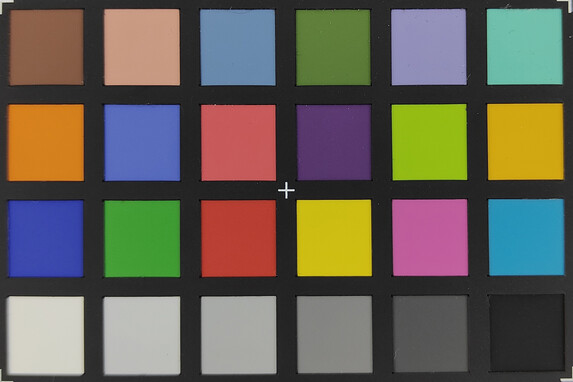
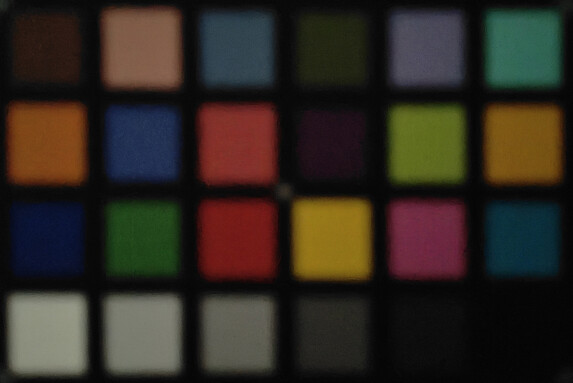
Accessories and warranty - 80-watt SUPERVOOC power supply
With the Find X5, Oppo includes an 80-watt rapid charger, a USB data cable (Type C to A), a SIM tool, a protective case, a quick-start guide, and a leaflet with safety instructions. An OTG adapter is also included.
The Oppo Find X5 comes with a 24-month warranty.
Input devices & operation - Optical fingerprint sensor and 2D face unlock
The capacitive touchscreen of the Find X5 works with a sampling rate of up to 240 Hz and responds accurately to touch input, regardless of where it is made on the screen. The smartphone is equipped with a factory standard protective screen foil that fits almost seamlessly with the touchscreen on the two short sides, but only covers the curvature on the two rounded long sides up to about half of the curve. The protective foil can be felt quite easily when holding the Oppo in your hands and the transition to the touchscreen feels quite hard.
Biometric authentication on the Find X5 takes place via the optical fingerprint sensor, which is hidden under the display. This functioned reliably and quickly in the test. The second unlocking method is 2D face recognition, which runs just as quickly in bright ambient light. Speed also remains high in the dark, but the recognition hit rate drops considerably. Then again, with a sufficiently bright display, the face unlock is normally very reliable.
Display - AMOLED panel screen with 120 Hz
The 6.55-inch AMOLED screen of the Find X5 with a resolution of 2400 x 1080 pixels is protected by Gorilla Glass Victus and operates with a refresh rate of 60 or 120 Hz.
According to the manufacturer, the screen is supposed to achieve a peak brightness of 1000 cd/m², but falls a little short in the test with a maximum of 813 cd/m² in the APL50 measurement. Nevertheless, the luminance is really good with the brightness sensor enabled, averaging around 718 cd/m². The Oppo also illuminates the display area very well with 95%. Without the brightness sensor, the screen achieves a maximum of 500 cd/m². At the lowest brightness level, it still shines with 2.14 cd/m².
The OLED flickering ranges from 120.2 to 371.3 Hz at a brightness level of less than 55%. Above that, it remains a constant 120 Hz (when the 120 Hz refresh rate is enabled).
| |||||||||||||||||||||||||
Brightness Distribution: 95 %
Center on Battery: 709 cd/m²
Contrast: ∞:1 (Black: 0 cd/m²)
ΔE ColorChecker Calman: 1.3 | ∀{0.5-29.43 Ø4.77}
ΔE Greyscale Calman: 1.3 | ∀{0.09-98 Ø5}
100% sRGB (Calman 2D)
Gamma: 2.27
CCT: 6489 K
| Oppo Find X5 AMOLED, 2400x1080, 6.6" | Apple iPhone 13 OLED, 2532x1170, 6.1" | Motorola Edge 30 Pro AMOLED, 2400x1080, 6.7" | Realme GT 2 Pro AMOLED, 3216x1440, 6.7" | Sony Xperia 5 III OLED, 2520x1080, 6.1" | Xiaomi 12 OLED, 2400x1080, 6.3" | |
|---|---|---|---|---|---|---|
| Screen | 21% | -1% | -94% | -72% | -17% | |
| Brightness middle (cd/m²) | 709 | 831 17% | 649 -8% | 740 4% | 554 -22% | 867 22% |
| Brightness (cd/m²) | 718 | 830 16% | 649 -10% | 732 2% | 559 -22% | 867 21% |
| Brightness Distribution (%) | 95 | 98 3% | 98 3% | 98 3% | 95 0% | 98 3% |
| Black Level * (cd/m²) | ||||||
| Colorchecker dE 2000 * | 1.3 | 0.77 41% | 1.18 9% | 3.25 -150% | 2.22 -71% | 1.7 -31% |
| Colorchecker dE 2000 max. * | 2.5 | 1.52 39% | 2.07 17% | 6.46 -158% | 5.94 -138% | 4.4 -76% |
| Greyscale dE 2000 * | 1.3 | 1.2 8% | 1.5 -15% | 4.7 -262% | 3.6 -177% | 1.8 -38% |
| Gamma | 2.27 97% | 2.209 100% | 2.236 98% | 2.213 99% | 2.193 100% | 2.2 100% |
| CCT | 6489 100% | 6501 100% | 2538 256% | 5663 115% | 7000 93% | 6762 96% |
* ... smaller is better
Screen Flickering / PWM (Pulse-Width Modulation)
| Screen flickering / PWM detected | 371.3 Hz | ||
The display backlight flickers at 371.3 Hz (worst case, e.g., utilizing PWM) . The frequency of 371.3 Hz is relatively high, so most users sensitive to PWM should not notice any flickering. However, there are reports that some users are still sensitive to PWM at 500 Hz and above, so be aware. In comparison: 53 % of all tested devices do not use PWM to dim the display. If PWM was detected, an average of 8091 (minimum: 5 - maximum: 343500) Hz was measured. | |||
In "Natural" color mode, the AMOLED display is limited to the sRGB color space, while the preset "Vivid" color mode covers the larger DCI-P3 color space. This occurred at 98.7% in our test device and is thus very close to the promised 100% color space coverage.
The Find X5 also delivered the best color reproduction in "Vivid" color mode and an adjusted color temperature (see screenshot for settings). Color precision and temperature as well as the RGB balance were all exemplary.
Display Response Times
| ↔ Response Time Black to White | ||
|---|---|---|
| 1.215 ms ... rise ↗ and fall ↘ combined | ↗ 0.583 ms rise | |
| ↘ 0.632 ms fall | ||
| The screen shows very fast response rates in our tests and should be very well suited for fast-paced gaming. In comparison, all tested devices range from 0.1 (minimum) to 240 (maximum) ms. » 5 % of all devices are better. This means that the measured response time is better than the average of all tested devices (20.2 ms). | ||
| ↔ Response Time 50% Grey to 80% Grey | ||
| 1.034 ms ... rise ↗ and fall ↘ combined | ↗ 0.49 ms rise | |
| ↘ 0.544 ms fall | ||
| The screen shows very fast response rates in our tests and should be very well suited for fast-paced gaming. In comparison, all tested devices range from 0.165 (minimum) to 636 (maximum) ms. » 4 % of all devices are better. This means that the measured response time is better than the average of all tested devices (31.6 ms). | ||
Performance - Oppo Find X5 with Snapdragon 888
The Find X5 is equipped with the Snapdragon 888, one of the fastest smartphone SoCs currently available. The Adreno 660 graphics chip is also in the high-end segment. Together with 8 GB of LPDDR5 RAM and fast UFS 3.1 memory, the Find X5 impresses with excellent system performance, ensuring short loading and response times in everyday use.
Sony's Xperia 5 III, which is also equipped with the Snapdragon 888, has a tough duel with the Find X5. The Oppo achieves a larger score advantage in AnTuTu v9, but unlike the Sony, it is limited to a maximum of 60 FPS in GFXBench. In practice, both smartphones have so much power that they can hardly be maxed out by any app. This also applies to the comparison devices with the Snapdragon 8 Gen 1, which still computes a few percentage points faster than the Snapdragon 888 across all benchmarks.
| AImark - Score v2.x | |
| Sony Xperia 5 III | |
| Oppo Find X5 | |
| Average Qualcomm Snapdragon 888 5G (171404 - 264766, n=15) | |
| Apple iPhone 13 | |
| Xiaomi 12 | |
| Jetstream 2 - 2.0 Total Score | |
| Apple iPhone 13 (Safari 15) | |
| Average of class Smartphone (23.8 - 387, n=148, last 2 years) | |
| Oppo Find X5 (Chrome 99.0.4844.73) | |
| Motorola Edge 30 Pro (Chrome 99) | |
| Sony Xperia 5 III (Chrome93) | |
| Xiaomi 12 (Chrome 99.0.4844.58) | |
| Realme GT 2 Pro (Chrome 99) | |
| Average Qualcomm Snapdragon 888 5G (61.3 - 125.1, n=13) | |
| JetStream 1.1 - Total Score | |
| Apple iPhone 13 (Safari 15) | |
| Motorola Edge 30 Pro (Chrome 99) | |
| Oppo Find X5 (Chrome 99.0.4844.73) | |
| Xiaomi 12 (Chrome 99.0.4844.58) | |
| Sony Xperia 5 III (Chrome93) | |
| Average Qualcomm Snapdragon 888 5G (77 - 223, n=19) | |
| Realme GT 2 Pro (Chrome 99) | |
| Speedometer 2.0 - Result 2.0 | |
| Apple iPhone 13 (Safari 15) | |
| Average of class Smartphone (15.2 - 643, n=121, last 2 years) | |
| Motorola Edge 30 Pro (Chome 99) | |
| Realme GT 2 Pro (Chome 99) | |
| Oppo Find X5 (Chrome 99.0.4844.73) | |
| Xiaomi 12 (Chrome 99.0.4844.58) | |
| Average Qualcomm Snapdragon 888 5G (46.9 - 121, n=12) | |
| WebXPRT 3 - Overall | |
| Apple iPhone 13 (Safari 15) | |
| Oppo Find X5 (Chrome 99.0.4844.73) | |
| Average of class Smartphone (38 - 380, n=31, last 2 years) | |
| Motorola Edge 30 Pro (Chrome 99) | |
| Xiaomi 12 (Chrome 99.0.4844.58) | |
| Average Qualcomm Snapdragon 888 5G (103 - 182, n=18) | |
| Octane V2 - Total Score | |
| Apple iPhone 13 (Safari 15) | |
| Motorola Edge 30 Pro (Chrome 99) | |
| Average of class Smartphone (2228 - 121337, n=195, last 2 years) | |
| Oppo Find X5 (Chrome 99.0.4844.73) | |
| Sony Xperia 5 III (Chrome93) | |
| Realme GT 2 Pro (Chrome 99) | |
| Xiaomi 12 (Chrome 99.0.4844.58) | |
| Average Qualcomm Snapdragon 888 5G (23491 - 47543, n=20) | |
| Mozilla Kraken 1.1 - Total | |
| Average Qualcomm Snapdragon 888 5G (891 - 1841, n=20) | |
| Average of class Smartphone (257 - 28190, n=154, last 2 years) | |
| Realme GT 2 Pro (Chrome 99) | |
| Xiaomi 12 (Chrome 99.0.4844.58) | |
| Oppo Find X5 (Chrome 99.0.4844.73) | |
| Sony Xperia 5 III (Chrome93) | |
| Motorola Edge 30 Pro (Chrome 99) | |
| Apple iPhone 13 (Safari 15) | |
* ... smaller is better
| Oppo Find X5 | Motorola Edge 30 Pro | Realme GT 2 Pro | Sony Xperia 5 III | Xiaomi 12 | Average 256 GB UFS 3.1 Flash | Average of class Smartphone | |
|---|---|---|---|---|---|---|---|
| AndroBench 3-5 | 14% | 12% | -7% | 41% | 18% | 48% | |
| Sequential Read 256KB (MB/s) | 1964 | 1832 -7% | 1749 -11% | 1593 -19% | 1851 -6% | 1757 ? -11% | 2243 ? 14% |
| Sequential Write 256KB (MB/s) | 782 | 1028 31% | 1225 57% | 740 -5% | 1417 81% | 1204 ? 54% | 1865 ? 138% |
| Random Read 4KB (MB/s) | 272.9 | 277.7 2% | 273 0% | 253.4 -7% | 325.2 19% | 287 ? 5% | 296 ? 8% |
| Random Write 4KB (MB/s) | 259.3 | 339.5 31% | 264 2% | 271.3 5% | 437.5 69% | 318 ? 23% | 339 ? 31% |
Gaming - Powerful gaming smartphone
Stereo speakers, performance galore, smoothly functioning position and motion sensors, and a precise touchscreen: Games are fun on the Find X5. Despite the activated 120 Hz display, our two test games. Armajet and PUBG Mobile, could not manage to run at more than 30 frames per second. However, there were no performance drops or stutters at any point. The frame rates determined with our test tool Gamebench remained practically fixed at 30 FPS.
Emissions - Sufficient performance despite throttling
Temperature
The Oppo Find X5's glass surfaces heat up to a maximum of 37.5 °C (99.5 °F) in use, which does not feel uncomfortable when held in the hand. Internally, however, the Snapdragon 888 throttles its performance as soon as it gets too hot. And this happens rather quickly, as 3DMark's Wild Life stress tests show. GFXBench would probably have delivered similar results, but unfortunately, the app always shut down before displaying the results.
The reduced SoC performance is unnoticeable in everyday use because there is still more than enough power on demand. However, we had to let the smartphone cool down for a while after each test run in order to obtain the best possible benchmark scores and thus meaningful comparison rates, as full power was otherwise no longer available.
(+) The maximum temperature on the upper side is 37.5 °C / 100 F, compared to the average of 35.2 °C / 95 F, ranging from 21.9 to 247 °C for the class Smartphone.
(+) The bottom heats up to a maximum of 36.5 °C / 98 F, compared to the average of 34 °C / 93 F
(+) In idle usage, the average temperature for the upper side is 28.7 °C / 84 F, compared to the device average of 32.9 °C / 91 F.
3DMark Wild Life Stress Test
| 3DMark | |
| Wild Life Stress Test Stability | |
| Apple iPhone 13 | |
| Realme GT 2 Pro | |
| Sony Xperia 5 III | |
| Motorola Edge 30 Pro | |
| Oppo Find X5 | |
| Xiaomi 12 | |
| Wild Life Extreme Stress Test | |
| Apple iPhone 13 | |
| Oppo Find X5 | |
| Realme GT 2 Pro | |
| Motorola Edge 30 Pro | |
| Sony Xperia 5 III | |
| Xiaomi 12 | |
Speakers
The Find X5 uses two Dolby Atmos-compatible stereo speakers that are located on the two short sides and can be played relatively loudly without distortion. However, they do not sound particularly uniform in the mid and high ranges and almost completely omit the bass range.
Audio devices can be connected to the Oppo via a USB jack adapter, which is wireless via Bluetooth 5.2. Supported Bluetooth audio codecs are SBC, AAC, aptX, aptX HD and LDAC.
Oppo Find X5 audio analysis
(+) | speakers can play relatively loud (88.7 dB)
Bass 100 - 315 Hz
(-) | nearly no bass - on average 31.7% lower than median
(±) | linearity of bass is average (9.6% delta to prev. frequency)
Mids 400 - 2000 Hz
(+) | balanced mids - only 4.4% away from median
(+) | mids are linear (4.7% delta to prev. frequency)
Highs 2 - 16 kHz
(±) | higher highs - on average 5.6% higher than median
(+) | highs are linear (4.3% delta to prev. frequency)
Overall 100 - 16.000 Hz
(±) | linearity of overall sound is average (21.4% difference to median)
Compared to same class
» 41% of all tested devices in this class were better, 8% similar, 51% worse
» The best had a delta of 11%, average was 35%, worst was 134%
Compared to all devices tested
» 59% of all tested devices were better, 7% similar, 34% worse
» The best had a delta of 4%, average was 24%, worst was 134%
Xiaomi 12 audio analysis
(+) | speakers can play relatively loud (90.7 dB)
Bass 100 - 315 Hz
(-) | nearly no bass - on average 19.3% lower than median
(±) | linearity of bass is average (8.2% delta to prev. frequency)
Mids 400 - 2000 Hz
(±) | higher mids - on average 5% higher than median
(+) | mids are linear (4.7% delta to prev. frequency)
Highs 2 - 16 kHz
(±) | higher highs - on average 7.5% higher than median
(+) | highs are linear (4.7% delta to prev. frequency)
Overall 100 - 16.000 Hz
(±) | linearity of overall sound is average (17.3% difference to median)
Compared to same class
» 11% of all tested devices in this class were better, 8% similar, 81% worse
» The best had a delta of 11%, average was 35%, worst was 134%
Compared to all devices tested
» 31% of all tested devices were better, 8% similar, 60% worse
» The best had a delta of 4%, average was 24%, worst was 134%
Battery life - 80 watts charging power and 50 watts wireless charging
Power consumption
The Find X5 is economical with its battery power. Compared to Sony's Xperia 5 III, which is also equipped with the Snapdragon 888, the Oppo smartphone's power consumption was sometimes significantly lower in all load scenarios.
The 4800 mAh battery can be recharged very quickly via the included 80-watt power supply. In the test, it only took 40 minutes to fully recharge an empty battery. Wireless charging (30 watts) and reverse wireless charging (10 watts) are also available on the Find X5.
| Off / Standby | |
| Idle | |
| Load |
|
Key:
min: | |
| Oppo Find X5 4800 mAh | Apple iPhone 13 3240 mAh | Motorola Edge 30 Pro 4800 mAh | Realme GT 2 Pro 5000 mAh | Sony Xperia 5 III 4500 mAh | Xiaomi 12 4500 mAh | Average Qualcomm Snapdragon 888 5G | Average of class Smartphone | |
|---|---|---|---|---|---|---|---|---|
| Power Consumption | 18% | -26% | -11% | -61% | -3% | -13% | -17% | |
| Idle Minimum * (Watt) | 1.01 | 0.6 41% | 1.2 -19% | 1 1% | 1.8 -78% | 0.87 14% | 1.066 ? -6% | 0.845 ? 16% |
| Idle Average * (Watt) | 1.59 | 1 37% | 1.6 -1% | 1.4 12% | 2.6 -64% | 1.7 -7% | 1.58 ? 1% | 1.44 ? 9% |
| Idle Maximum * (Watt) | 1.6 | 1.3 19% | 2.5 -56% | 1.7 -6% | 3.1 -94% | 1.82 -14% | 1.733 ? -8% | 1.625 ? -2% |
| Load Average * (Watt) | 3.87 | 4.5 -16% | 5.2 -34% | 5.3 -37% | 5.3 -37% | 4.68 -21% | 5.46 ? -41% | 7.01 ? -81% |
| Load Maximum * (Watt) | 8.74 | 7.8 11% | 10.4 -19% | 11.1 -27% | 11.5 -32% | 7.41 15% | 9.79 ? -12% | 11.3 ? -29% |
* ... smaller is better
Power Consumption: Geekbench (150 cd/m²)
Power Consumption: GFXBench (150 cd/m²)
Battery life
There are smartphones that must be recharged every day even under normal use because the battery then goes flat on the second day. With operating times of more than 15 hours during simulated web browsing and over 21 hours during video playback, the Find X5 proves that it does not belong to this category. If you use the Oppo heavily, the battery is likely to go flat after one day. But under normal use, two days in a row should definitely be possible.
| Oppo Find X5 4800 mAh | Apple iPhone 13 3240 mAh | Motorola Edge 30 Pro 4800 mAh | Realme GT 2 Pro 5000 mAh | Sony Xperia 5 III 4500 mAh | Xiaomi 12 4500 mAh | |
|---|---|---|---|---|---|---|
| Battery runtime | 16% | -2% | 6% | -22% | 9% | |
| Reader / Idle (h) | 34.6 | 45.6 32% | 33.1 -4% | 34.3 -1% | 42.6 23% | |
| H.264 (h) | 21.6 | 20.4 -6% | 16.8 -22% | 18.1 -16% | 14.8 -31% | |
| WiFi v1.3 (h) | 15.6 | 17 9% | 13.6 -13% | 17.6 13% | 12.1 -22% | 12.7 -19% |
| Load (h) | 3.9 | 5 28% | 5.1 31% | 4.9 26% | 6.4 64% |
Pros
Cons
Verdict: High-end with minor compromises
Officially, Oppo's Find X5 plays second fiddle to the Find X5 Pro, but it is as well positioned as the flagship smartphone.
With the Hasselblad camera unit, the Find X5 is a trophy model of the series. Moreover, it shines with advantages such as a bright and color-accurate AMOLED screen, long battery life, fast charging speed and good mobile frequency coverage. Last but not least, it impresses with a very high-quality design.
The Oppo Find X5 is a strong high-end smartphone and close to the Oppo Find X5 Pro.
The Find X5 lacks only a few small details that prevent it from being a "real" flagship: There is no IP certification and there is no option to expand the memory. The Oppo also does not support an adaptive refresh rate. On the other hand, we don't see the choice of SoC as a disadvantage. The lightning-fast Snapdragon 888 has to reduce its output from time to time, but it does not struggle with the heat problems of the slightly faster Snapdragon 8 Gen found in the Find X5 Pro.
Alternatives to Oppo's Find X5 are, for example, Sony's Xperia 5 III, Motorola's Edge 30 Pro, and on the iOS side, Apple's iPhone 13.
Price and availability
The Oppo Find X5 officially costs 999 Euros. Online stores, including Amazon, for example, were still listing the same price at the time of testing.
Oppo Find X5
- 08/30/2022 v7 (old)
Manuel Masiero




